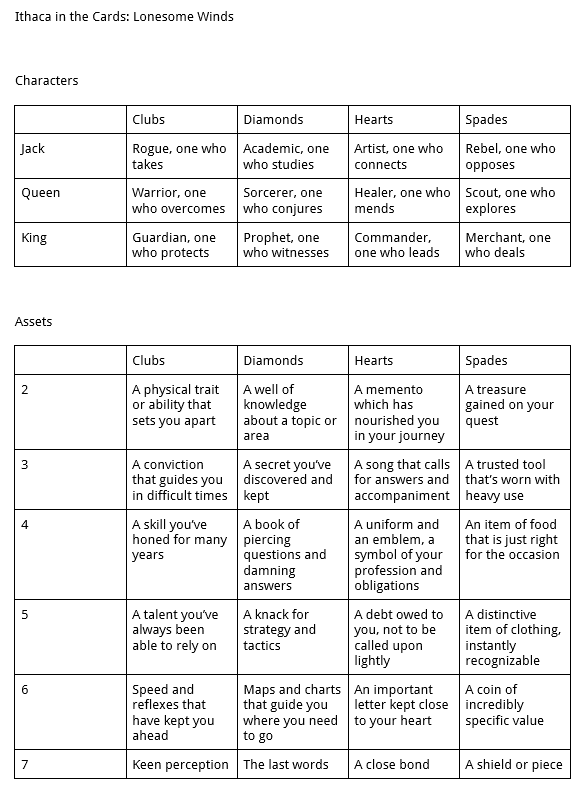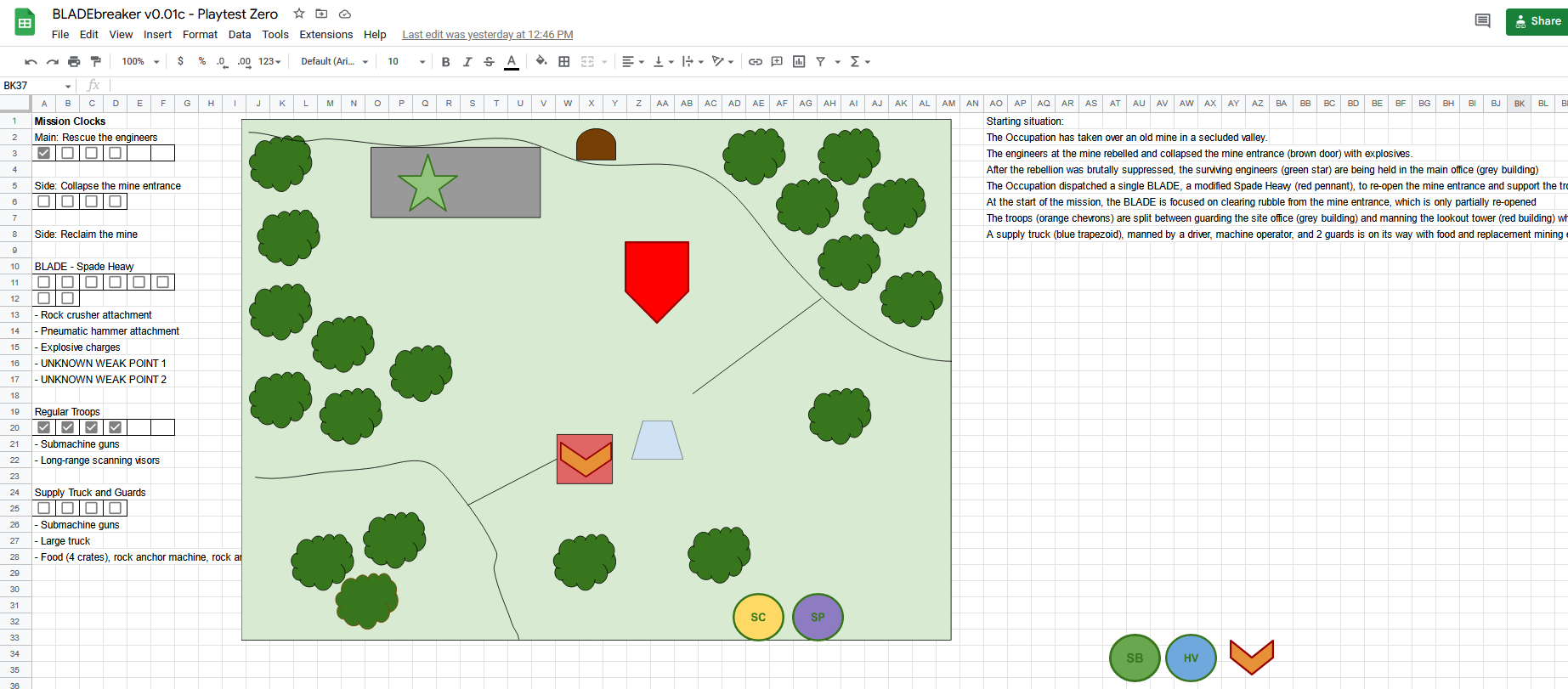September 2022 - Busy Busy
Hello, allies and adversaries!
Sorry I'm a week late with the newsletter, it's been a really busy month! Obviously there's the Spectres of Brocken Kickstarter (Which is going well! It's funded and there's still a few days to go before the campaign ends, so check that out here!), but I've also been busy with a big report due for work due in early October, some commission work, and starting a new part-time job teaching game design basics at a local institute.
I also had to sort out my visa for travel to the USA, and I'm happy to say that I'll be at Big Bad Con in San Francisco from 27-30 October 2022 thanks to their POC Scholarship programme. I have to say I'm still quite nervous about international travel and going to a convention, and I've been fortunate enough to have avoided getting COVID so far, but the scholarship is a really cool opportunity and I'm excited to head over and play some games and meet people. If any of you reading are going to be at Big Bad Con, do say hi!
In addition! I did a bunch of streaming this month, plus several podcasts that I guested on released, all part of promotion efforts for the Spectres of Brocken campaign. After the livestream on Plus One Exp in the previous month, I did a two-part livestream over on the Actual Play channel, split between the Academy Phase and the Conflict Phase.
I also guested on an episode of the Draw Your Dice podcast, chatting with Jeremy Gage about the design of Spectres of Brocken and adventures, and then on a slightly unrelated note was also on an episode of the Party of One podcast playing my game, Ithaca in the Cards. I had picked Ithaca in the Cards to play with Jeff earlier as I thought it would be a great fit for the format of the show, but luckily got to do a bit of a plug for Spectres of Brocken as well. I'm pretty proud of Ithaca in the Cards as one of my earlier designs, and as you hear on the episode, I've been working on an update to expand the prompts in that game and maybe add in a solo mode, but that's on a bit of a backburner at the moment. However, you can have a look at the current draft of the expanded prompts here.

Again on a bit of a tangent, I was also a guest on the Beacon of Creation podcast along with Caro Asercion who had just released Exquisite Biome, We took part in their Design Rush challenge, where I had an absolute blast coming up with designs for Magic: The Gathering cards on the fly. It was really nice dipping my toe back into card design, as I credit Magic: The Gathering as a major influence in me making games.
Finally, I also did an impromptu livestream on my own channel (archived now on YouTube here), delving into the superceded documents in the Spectres of Brocken design folder and looking at how the game has changed over time. I'm hoping to re-watch that stream and put together a summary of it in text at some point, since that would be a good source for the designer commentary on Spectres of Brocken and I might send an early version of that out through this newsletter.
That's a lot of marketing stuff (for me) this past month! I haven't actually gotten to do much game design work this past month except for a brief playtest of BLADEbreaker, where the most important thing to come out of it was I really need nail down how I intend for the Lead and Second characters to be present and interact with a mission. I've just been handwaving it up to now since I've been focusing on the changes to dice and resources in the Forged in the Dark system, but it's a pretty core thing to figure out as it will affect so much of how actions and conditions and gear and special abilities work in missions, so I really do need to sort that out.

Besides that, it's been really interesting and quite nice to focus on the basics of game design as I've been teaching this game design class. The programme is geared towards videogames design, but I'm teaching the intro class which focuses purely on tabletop games to develop fundamentals. I've been mainly running the Play Labs where we play a bunch of tabletop games that relate to the current week's lessons and discuss how the principles are applied in games.
Since the students are mainly focused on making videogames, they haven't had a wide exposure to modern tabletop games (also they are a big luxury here in Malaysia since the exchange rates are killer and games are so expensive) and it's been cool to introduce them to different concepts like drafting, information control, game loops, controlling randomness, and how materials and physicality affect perceptions of play.
In the first week, I started them off with Space Cadets: Dice Duel, Camel Up, Blueprints and Roll Through the Ages. It's a really small class of just 8 students, so it was nice to be able to all play together or split up into groups of 4. The first week's lesson was on the different elements of games/fun (e.g. Roger Caillois' four categories of agon, alea, mimicry and ilinx in Man, Play and Games), so I wanted to show them games that highlighted different aspects of play while all using the common game element of rolling six-sided dice.
Space Cadets: Dice Duel was chosen as an example of mimicry or roleplay but ended being a really good case study in how different parts of the game evoked different elements since you were competing against another team, dealing with the randomness of the dice rolls, acting out being a spaceship crew and also having that physical feeling of rolling and re-rolling dice frantically. I also chose Space Cadets: Dice Duel since I figured a co-op or team game would help break the ice between the students in the first week.
Camel Up was a nice example of how information flow and calculating probabilities is important and fun in games, and also was a nice example of how the physical piece design of the stacking camels and dice pyramid influenced enjoyment of the game even as they introduced points of friction in succeeding at the game. Blueprints was chosen as an example of how dice could be used because of their physical properties as they are hardly rolled in that game but their orientation and value does matter, and Roll Through the Ages was chosen to demonstrate several mitigation strategies for chance and to show how a basic design like rolling dice and marking off a printed sheet could try to emulate something like a civilization-building strategy game.
It's been really fun getting to teach game design and seeing how students react to the games and I'm looking forward to seeing how they implement the ideas into their own game design practice as they put together their own board game for their semester-long project.
On a final note, I've been really hyped about Mobile Suit Gundam: The Witch from Mercury! I was already really happy with how the Prologue set up the themes of the show, and now that it's started airing in earnest, I was blown away by how much the first episode reflected so much of what I wanted to explore in Spectres of Brocken. The show is set in an elite academy for mech pilots, engineers, designers, and support stuff where disputes are settled with duels in giant mechs! And we know it's a Gundam show, so the spectre of war is constantly haunting the proceedings. Also, they're lesbians. This is Revolutionary Girl Gundam; this is Mobile Suit Utena; this is Spectres of Brocken; this is the perfect hole that was made for me, and I'm so excited to climb in and get cozy.
Climbing-into-a-hole regards,
Aaron
